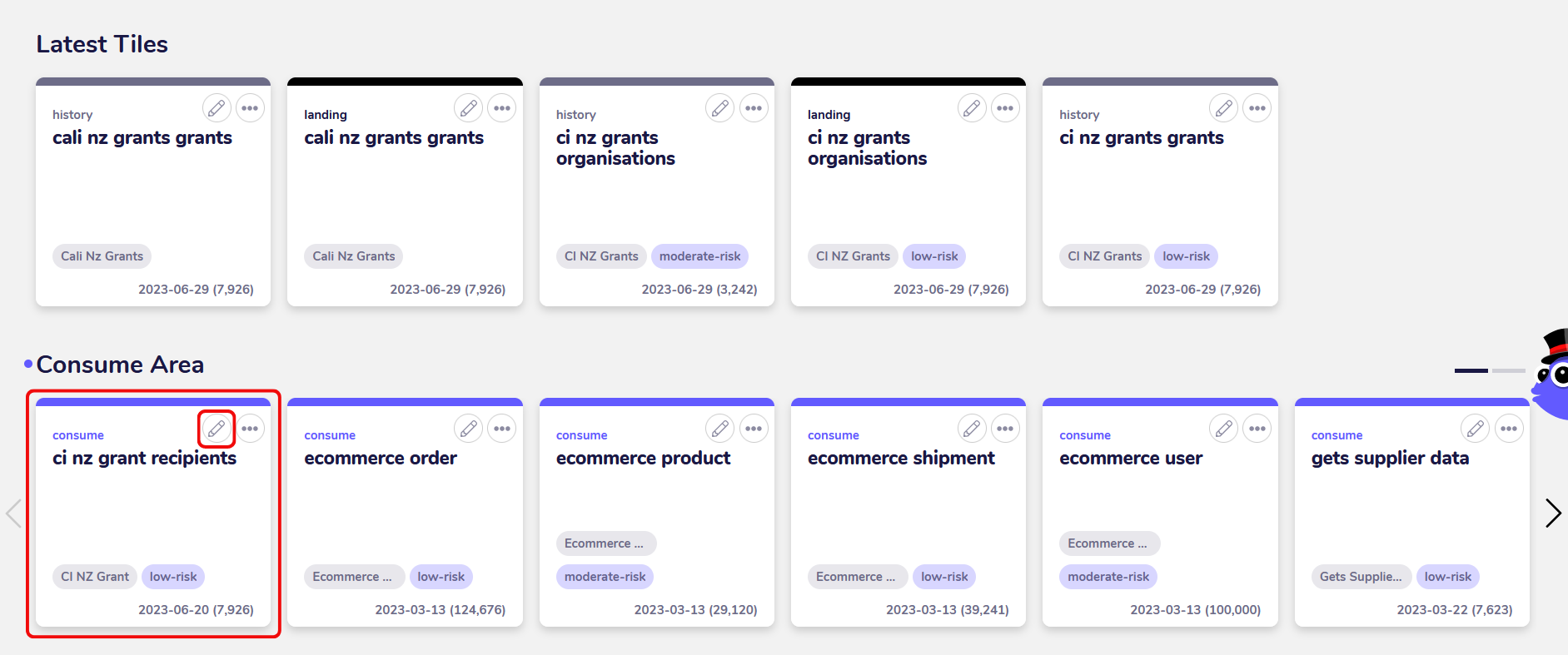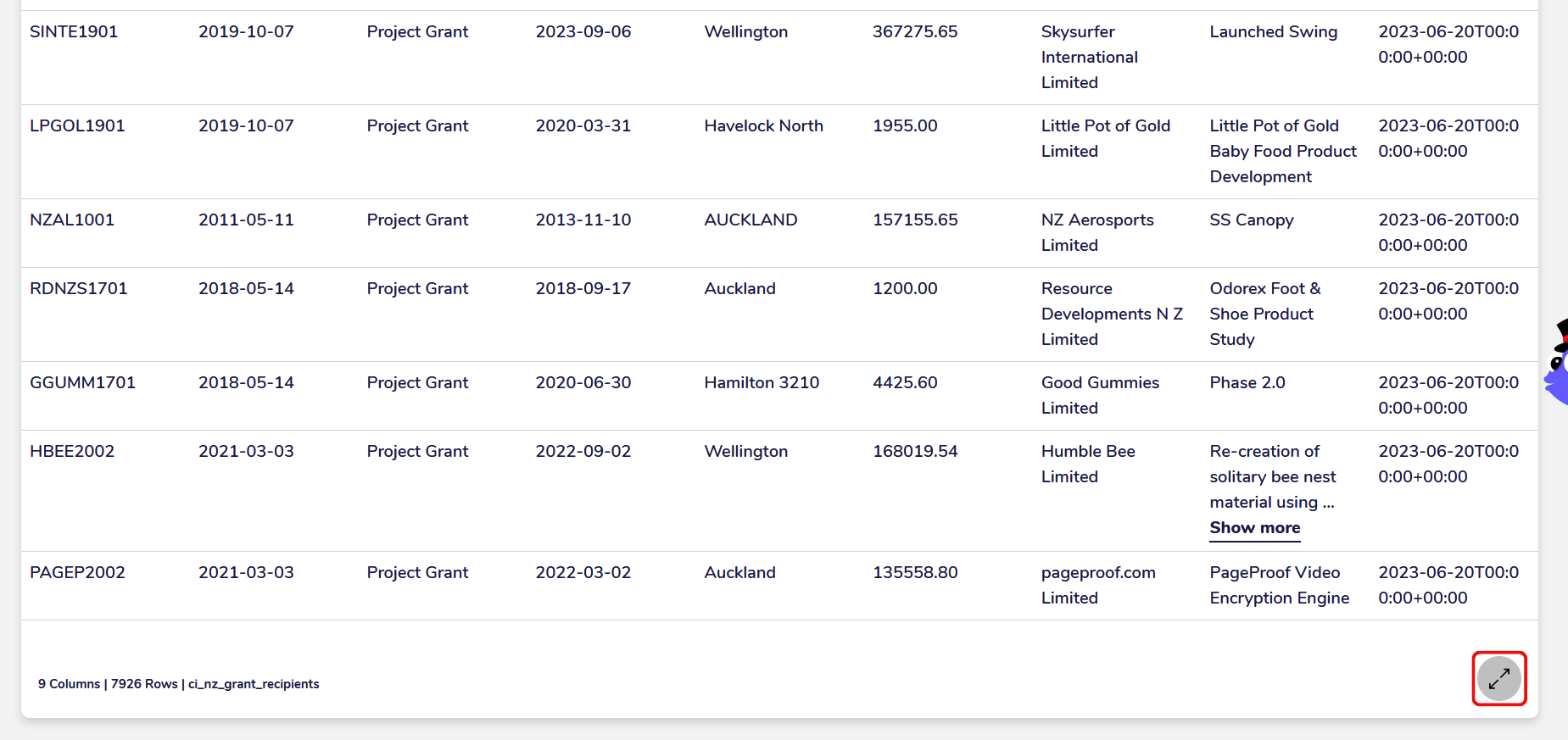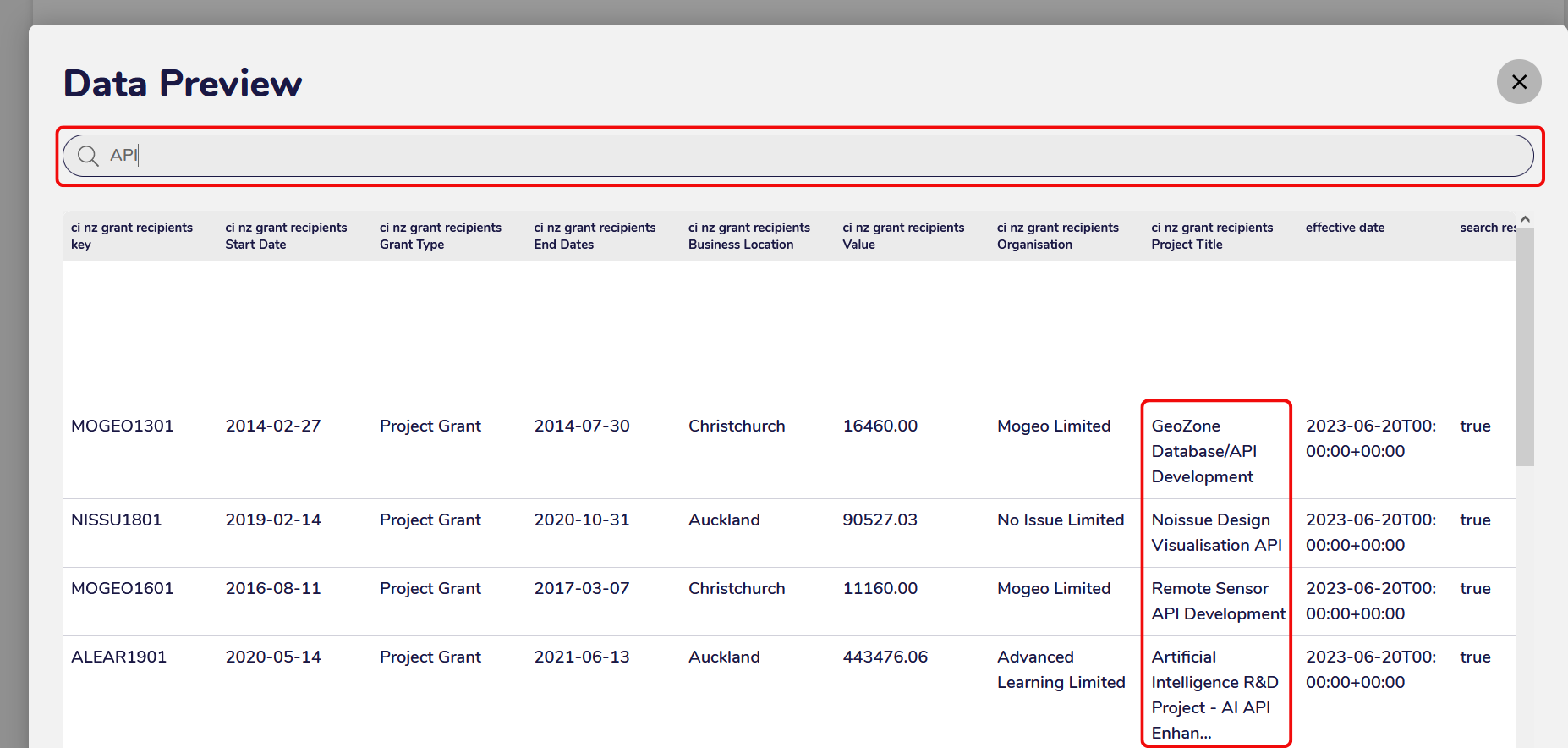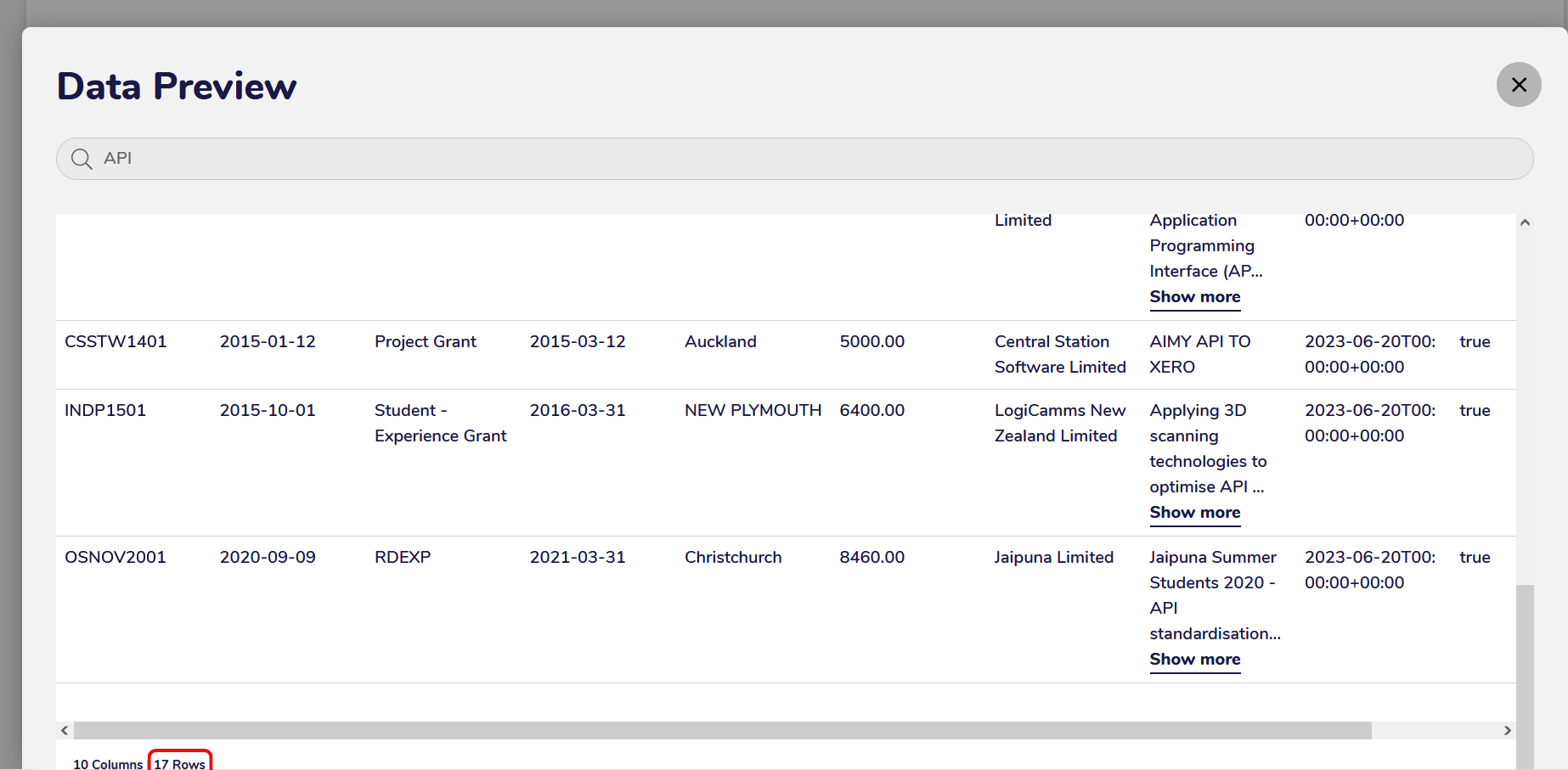Catalog - Tile Detail - Data Search¶
Overview¶
Did you know that you can use the tile detail screen to search your data for specific keywords or values?
Data search provides an advanced search functionality, which can search through all the data in a tile, even if it has millions of rows. With the data search feature, you can display your data in a more sophisticated way and answer specific questions you might have about your data.
The data search feature adds to the data preview functionality, making it even easier for you to conduct advanced data exploration with the AgileData App. While the data preview feature focuses on general statistics like the row and column count, the data search lets you dive into specific results as if you would execute an SQL query in plain English.
Steps¶
1. Choose the data you want to search¶
You can access the data preview and data search features by clicking on the tile with the data you want to examine. Alternatively, you can also click on the pen icon in the top right corner of the tile.
For this guide, we’re going to examine a tile with data about business grant recipients in New Zealand.

After you clicked on the tile, a new screen with the tile details will open.
The tile detail page provides further insights into the data in the tile, for example, trust rules which have been applied and context about the data which has been added by Data Magicians and Data Consumers.
By scrolling down you can reach the data preview section for the tile.
The data preview shows the first 10 rows of the data and the respective row values for all fields. Additionally, it provides an overview of the distribution of values in the fields as a small diagram and the percentage of null values as a colored bar.
2. Expand the preview section in a separate window¶
You can search the data within the main Tile Detail screen or within the expanded Data Preview screen.
For this guide we will use the expanded Data Preview screen, as it provides more screen space and displays more fields.
To expand the data preview, scroll to the very bottom of the data preview zone and click on the expand icon in the bottom right corner.

The expanded data preview lets you gain further insights into the data by also showing the distribution diagrams and the null value bars, as well as offering a search bar to filter the result rows.
3. Search the data for specific keywords¶
The search bar works similarly to executing an SQL query on the data in the tile. Type in any word or combination of words and the preview window will return a result set of rows containing that searched word or keyphrase in any of its fields.
Presume we want to search for all business grants related to the development of an API. Typing “API” into the search bar returns all rows with fields that mention the term API anywhere among the field values.

By scrolling down to the bottom of the data preview window you can also see the overall number of rows in the search result set, which in this case is 17. Just like with the general preview, only the first 10 rows get displayed in the data preview window.

Use Cases¶
1. Answer quick questions for clients¶
The data search feature is extremely useful to answer quick questions for your clients. While not incorporating the full functionality of executing SQL queries, the search bar can already give you general hints whether what you’re looking for actually gets covered by your data at all and if yes, which fields are related to your question.
You can also make use of this if clients send you screenshots of their applications or problems and you have nothing but a few keyphrases to work with. In this case, the search feature can be your starting point when exploring the data for further clues.
2. Find the fields which are relevant to your data analysis¶
Not all fields in the data are relevant when conducting a data analysis. It’s an important part of data exploration to identify the fields which hold the information relevant to the questions you’re trying to answer. The search feature gives you a powerful way of finding fields containing specific pieces of data.
Field names are easy to read, but often they don’t convey the meaning of the values. The data search feature gives you the possibility to dive deeper into your data and figure out precisely where you can get the answers you’re looking for.
